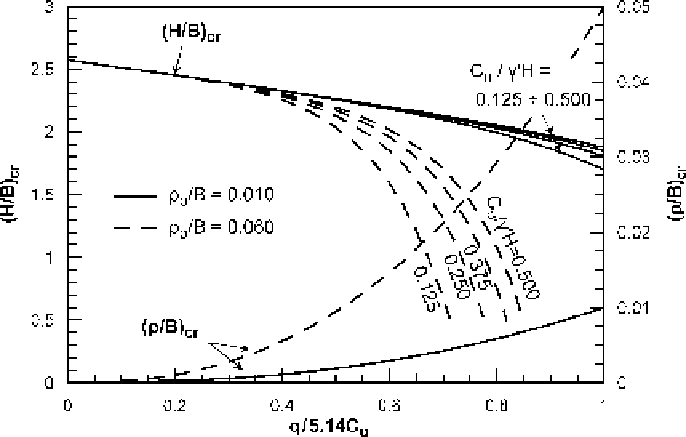Geoscience Reference
In-Depth Information
Fig. 11.25. Charts forthe evaluation of (a) the“critical thickness” of a soilcrust
required forminimization ofthe staticbearing capacity degradation, and (b) the
associated liquefaction settlements
orfromEq.11.17,ishigherthantheallowablesettlement,theaveragebearingpressure
q
shouldbereducedfollowingthedetailedcomputationalprocedureoutlinedinTable11.2.
7. Concluding remarks
This article has been devoted to analytical and simple numerical methods which can be
applied in practice for the evaluation of end-of-shaking degraded bearing capacity and
settlementofstripfoundationsrestingonthesurfaceofliquefiablesandcoveredbyaclay
crust.Followingabriefliteraturereview,anintegratedanalyticalprocedurehasbeenpre-
sentedwhichwasbuiltupontheresultsofnumerical(fullycoupleddynamic)parametric
analysesandcalibratedagainstcentrifugetestmeasurementsandfieldobservationsfrom
Dagupan City, Philippines, after the 1990 Luzon
M
8 earthquake. In closure, it is
felt that attention should be drawn to the following main points:
=
7
.
(a) Liquefaction-induced bearing capacity degradation and settlement accumulation
are two rather complex engineering problems, affected by a considerable number
of soil, foundation and seismic excitation parameters (e.g.
H
B
,
C
u
/γ
H
,
q
/γ
B
,
/
a
max
T
2
Z
liq
·
ρ
o
=
ϕ
o
).Thus,empiricalorothersimplifiedmethod-
ologies which necessarily rely only upon a limited number of these parameters
should be used withcaution and a strong spirit of conservatism.
0
.
016
·
N
and

